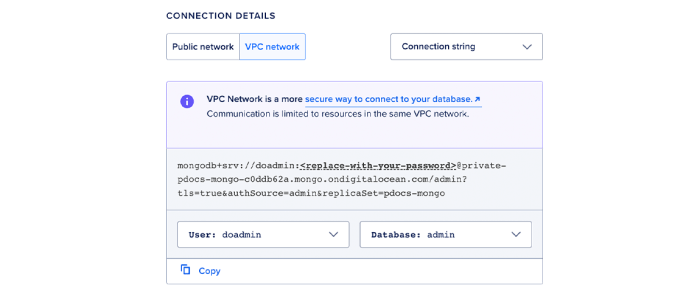
Delving into DigitalOcean Security: Settings, Best Practices & Common Mistakes, this introduction immerses readers in a unique and compelling narrative, with a casual formal language style that is both engaging and thought-provoking from the very first sentence.
As we explore the realm of DigitalOcean Security, we uncover the crucial aspects of settings, best practices, and common mistakes that can impact the security of your infrastructure.
Introduction to DigitalOcean Security
When it comes to DigitalOcean Security, it refers to the measures taken to protect the infrastructure, data, and applications hosted on the DigitalOcean cloud platform. This includes ensuring the confidentiality, integrity, and availability of resources to prevent unauthorized access, data breaches, and other security threats.
Securing your DigitalOcean infrastructure is crucial to safeguard sensitive information, maintain the trust of customers, and comply with regulatory requirements. By implementing proper security measures, you can reduce the risk of cyber attacks, data loss, and downtime that could impact your business operations.
The Significance of Settings, Best Practices, and Common Mistakes
- Proper Settings Configuration:
- Enable firewall rules to restrict inbound and outbound traffic.
- Implement Multi-Factor Authentication (MFA) for added security.
- Regularly update and patch your operating system and software to address vulnerabilities.
- Best Practices:
- Encrypt data at rest and in transit to prevent unauthorized access.
- Implement strong password policies and user access controls.
- Monitor logs and audit trails for suspicious activities.
- Common Mistakes to Avoid:
- Using weak or default passwords that are easy to guess.
- Ignoring software updates and security patches, leaving systems vulnerable.
- Granting excessive permissions to users, increasing the risk of unauthorized access.
Settings, best practices, and common mistakes play a vital role in enhancing the security of your DigitalOcean environment. Understanding how to configure settings correctly, following industry best practices, and avoiding common security pitfalls can help you build a robust security posture and protect your assets effectively.
DigitalOcean Security Settings
When it comes to securing your DigitalOcean account and resources, there are several essential security settings you can configure to enhance the protection of your data and infrastructure. One of the key aspects of securing your account is setting up strong firewall rules and enabling two-factor authentication to prevent unauthorized access.
Configuring Firewall Settings
Firewalls play a crucial role in network security by controlling incoming and outgoing traffic based on a set of rules. Configuring firewall settings on DigitalOcean can help you restrict access to your droplets and other resources, reducing the risk of unauthorized access and potential security breaches.
- Access the DigitalOcean dashboard and navigate to the Networking section.
- Select the Firewall tab and click on "Create Firewall" to set up a new firewall rule.
- Define the inbound and outbound rules based on your specific requirements, such as allowing traffic only on certain ports or from specific IP addresses.
- Name your firewall rule for easy identification and click on "Create Firewall" to apply the settings.
Setting Up Two-Factor Authentication
Two-factor authentication (2FA) adds an extra layer of security to your DigitalOcean account by requiring a second form of verification in addition to your password. This can help prevent unauthorized access even if your password is compromised.
- Go to your account settings on DigitalOcean and select the Security tab.
- Enable two-factor authentication and choose your preferred method, such as using an authenticator app or receiving SMS codes.
- Follow the on-screen instructions to complete the setup and verify your identity when logging in to your account.
- Make sure to store backup codes in a secure location in case you lose access to your primary 2FA method.
Best Practices for DigitalOcean Security
Implementing best practices is essential for maintaining a secure environment on DigitalOcean. By following these guidelines, you can enhance the security of your Droplets and other resources
Regular Software Updates
Regular software updates are crucial for maintaining the security of your DigitalOcean environment. By keeping your operating system, software applications, and plugins up to date, you can patch vulnerabilities and protect against potential threats.
Role of SSH Keys
Utilizing SSH keys is a key component of enhancing security on DigitalOcean. SSH keys provide a secure way to authenticate and connect to your Droplets without relying on passwords. By using SSH keys, you can add an extra layer of protection to your resources.
Common Mistakes in DigitalOcean Security
When it comes to DigitalOcean security, there are several common mistakes that users often make, putting their data and systems at risk. It's essential to be aware of these pitfalls to ensure a secure environment for your applications and sensitive information.
Weak Passwords
One of the most prevalent mistakes users make is using weak passwords that are easy to guess or crack. Weak passwords can be a significant security vulnerability, allowing unauthorized access to your DigitalOcean account or droplets.
- Avoid using passwords that are too short or easily guessable, such as "password123" or "123456."
- Include a mix of uppercase and lowercase letters, numbers, and special characters in your passwords to make them more secure.
- Regularly update your passwords and avoid reusing the same password across multiple accounts.
Misconfigured Firewall Rules
Misconfigured firewall rules can also pose a threat to your DigitalOcean security. Improperly configured firewall settings can leave your droplets vulnerable to attacks and unauthorized access.
- Always review and double-check your firewall rules to ensure that only necessary ports are open and that access is restricted to trusted IP addresses.
- Avoid leaving default firewall rules in place without customizing them to fit your specific security requirements.
- Regularly audit your firewall configurations to detect any anomalies or unauthorized access attempts.
Final Thoughts

In conclusion, understanding DigitalOcean Security: Settings, Best Practices & Common Mistakes is vital for safeguarding your digital assets. By implementing the right settings, following best practices, and avoiding common pitfalls, you can enhance the security of your DigitalOcean environment.
FAQs
What are some essential security settings on DigitalOcean?
Essential security settings on DigitalOcean include configuring firewall rules, enabling monitoring and alerts, and implementing two-factor authentication.
How can I secure Droplets effectively?
Securing Droplets involves regular software updates, using SSH keys for secure access, and setting up firewalls to control traffic.
What are the risks of weak passwords on DigitalOcean?
Weak passwords pose a significant risk to DigitalOcean security as they can be easily compromised by attackers. It's crucial to use strong, unique passwords.
How do misconfigured firewall rules impact DigitalOcean security?
Misconfigured firewall rules can leave your infrastructure vulnerable to attacks by allowing unauthorized access or blocking legitimate traffic. Regularly reviewing and updating firewall rules is essential.












